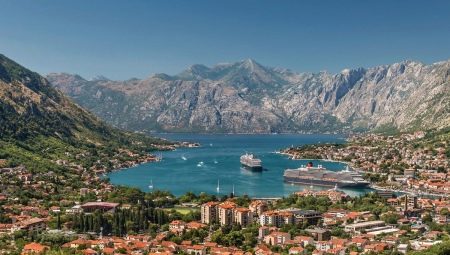Boko-Kototskaya bay is a radiant and caressed place with hot south winds. Its shores are dotted with miniature ancient towns, villages, Orthodox churches, palaces, cathedrals, beautiful bays and lush greenery, inspiring relaxation and romantic moods. The rich history of the region, a limitless combination of many architectural styles that go beyond the usual ideas, give it a special originality, that mystery and energy that drives tourists visiting these places from year to year.

Description
Boko-Kotor Bay is a deep bay (up to 20 km) extending into the territory of Montenegro. It is believed that he appeared on the site of the ancient canyon that once existed here. Its depth reaches 40 m, so even large cruise ships can easily go through the bay almost to the end.
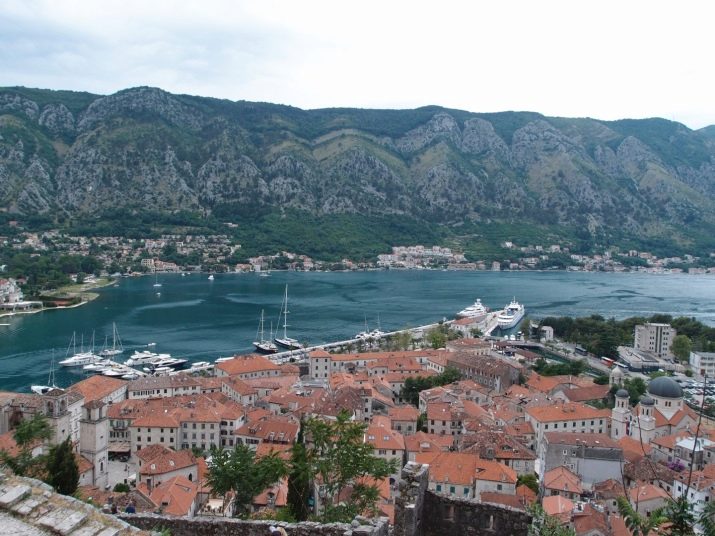
The width of the bay at its beginning reaches 3 km. Here are the island of Mamula, the peninsulas of Lustica and Prevlaka with the fortress of Azra and Oshtro. The bottleneck (about 300 m) is called Veriga. The Bay of Kotor is surrounded by a coastal route 105.7 km long, from sections of which you can be inspired by the beauty of the bay from almost any angle. The bay itself consists of 4 bays: Kotor, Risan, Tivat and Herceg Novsky.
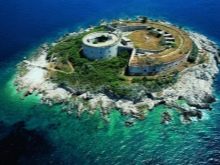
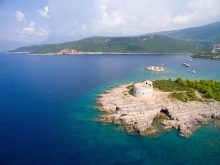

Each of them attracts with its special beauties and sights.
One cannot but recall a number of islands adorning the bay:
- “The Virgin on the reef”;
- Island of Flowers;
- St. Marco Island;
- island of mercy;
- island of St. George.
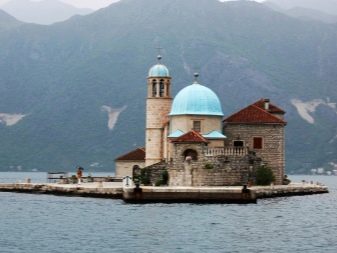

Each island breathes history, legends and traditions are composed about them.
The name of Boko-Kotor Bay of Venetian origin, where "Bocca" means "mouth" and "Kotor" is formed on behalf of the main city in the region - Kotor. It turns Kotor mainland, absorbing the sea.

Numerous settlements and fishing villages are scattered across Kotor, where small industries work in abundance. There are in the region (includes 3 municipalities - Kotor, Tivat and Herceg Novi) shipbuilding and repair plants, ports and an airport, successfully located on the coast of the Tivat Bay.


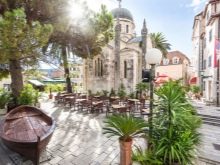
The Boka Kotor Riviera looks great from Mount Lovcen (1500 meters), from where you can see the whole panorama of this largest bay in the Mediterranean basin. This is a beautiful bay dotted with small towns and mansions. The rich greenery of the landscape, abundantly covered with cypresses, olive and lemon trees, other Mediterranean plants, pacifies.

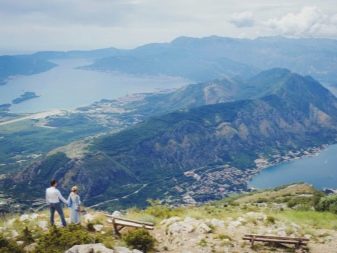
All this mysteriously contrasts with the severe mountain slopes, with their caves and karst layers. A picture that will not leave anyone indifferent.
Climate
Montenegro is characterized by 4 climatic zones: coast, rocky plateau, plain and highlands.
The narrow coast of the bay is characterized by the typical Mediterranean climate - sultry summers and wet, mild winters. Summer is hot (in July an average of 28-30 degrees), little rainfall - 25-50 mm. The sun dominates here for about 2,300 hours a year and southerly winds prevail almost all year round. Even for winter, the north wind is rare.


Heavy rains are observed from November to January, when 170-260 mm of precipitation falls monthly. The northern parts of the coast are more rainy than the southern. In January, the average night temperature is at least 4-5 degrees, during the day - 11-13 degrees. Negative temperatures are rare in the region. The swimming season lasts from late May to October, the water temperature is 20-25 degrees.
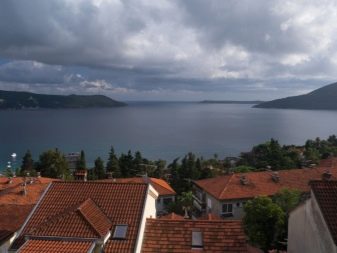
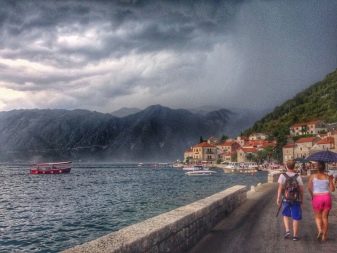
Due to the high mountains that carefully cover the terrain, the Kotor region has a mild and warm climate. Occasionally, especially in winter, air masses overcome a mountain barrier and the bay is covered with a rain curtain. In the summer, unpredictable wind games can form morning mists. Strengthening winds is extremely characteristic of bottlenecks in the bay (Veriga and the city of Perast).
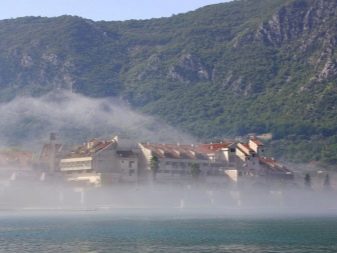
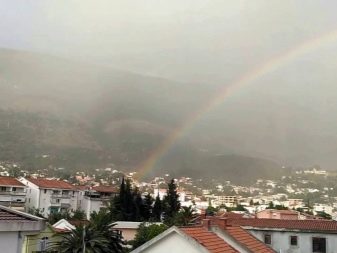
It is because of such winds that it is sometimes cold in some parts of the region even in June.
There are no formed or established currents in the Bay of Kotor. All of them are variable and depend on the time of the ebb and flow. By summer, their flow rate increases. In the south of the bay, the northwest stream moves at a speed of 1 km / h. More high-speed flows - up to 4 km / h, form after heavy rains and move from the bay to its entrance. Therefore, the temperature of the water in the bay fluctuates and directly depends on the specific location, flow velocity and underwater terrain. Warmer waters are observed in Bok, Budva, Petrovac and other places.

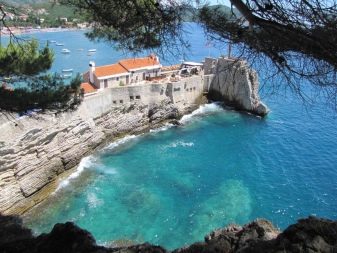
For example, according to some observations, at the end of July in the Budva Riviera with the advent of a cold current, the water becomes colder for several days.
What to see?
Despite the pronounced resort universalism of the region, the dominant historical factor, the abundance of attractions and natural beauties have transformed the Bay of Kotor into a mecca of educational tourism.
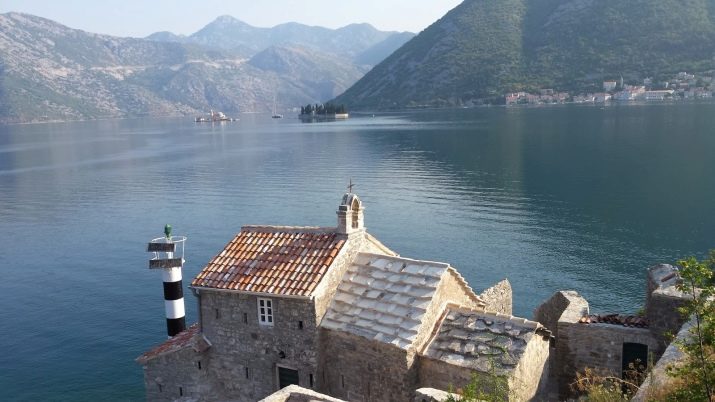
The main city of the bay and the seaport is Old Kotor. Cruise ships and yachts come here. The old part of the city is located at the foot of Lovcen Mountain and is under the protection of UNESCO. She is so beautiful that she is called the "bride of the Adriatic." It is noteworthy that in the layout of the city and its houses there are no right angles.
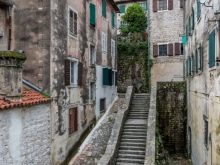

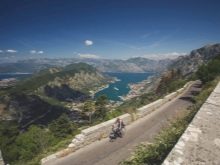
So medieval architects, being superstitious people, decided to avoid any devilry.
For four centuries, the city was part of the Republic of Venice, as evidenced by its architectural style.The legacy of the Austro-Hungarian rule of Kotor remained the prison and theater of Napoleon after a short occupation by the French.

In Kotor it is worth visiting the Clock Tower and a pillar of shame, from which the criminals were ostracized. Architectural monuments are the Cathedral of St. Tryphon, the Church of St. Luke (XII century), the Maritime Museum is extremely interesting. The fortress of St. Giovanni is amazing, where, overcoming 1400 steps, you can not only check the level of your physical fitness, but also get the aesthetic pleasure of the beauties surrounding it.


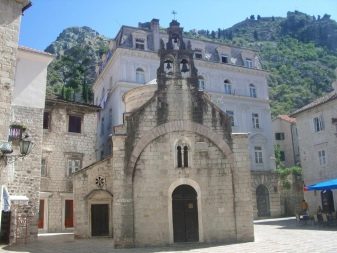

Residents of Kotor have a clear favor for cats; museums, art galleries, souvenir shops and even the square are dedicated to them.
Perast is the birthplace of skilled Bokel captains and fleet admirals of Tsarist Russia. Its cozy and somewhat toy look on one of the hills of the bay just touches. The place has a creative aura. It is a city of poets, writers and artists.
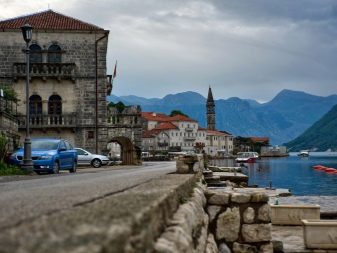

Climbing to the fortress of the Holy Cross, you will be able to fully appreciate from different angles the beauty and charm of this place. The fortress itself was built in the XVII century with the money of the residents of the city, its bell tower has a height of 55 meters.

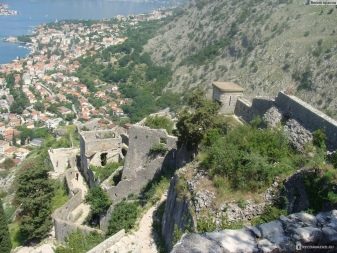
The museum located in the ancient palace of the famous navigator of the 17th century Buyovich is also good here. The museum exhibits about shipyards, sea battles with the Turks, Russian boyars of Peter I, trained by local sea wolves, are popular in the museum.

Nearby, opposite Perast, in the sea haze soar two famous islands - the Virgin on the Reef and St. George.
First, the island of the Virgin - man-made origin. According to legend, two brothers found in this place the icon of the Virgin, which is now in the church, being the amulet of Perast. On the walls of the church are stored silver and gold tiles left by sailors before the campaigns. The church is amazing in dozens of paintings written in the XVII century by the famous master Tripo Kokol.

The second island is known for having a cemetery of captains and famous inhabitants of Perast. Here is the famous Benedictine Abbey.
The numerous names of Herceg Novi speak for themselves - the City of a Thousand Steps, the Botanical Garden of Montenegro, the favorite resort of the Yugoslav intelligentsia. The city is located on a hill, the numerous paths of the city for the most part consist of steps.
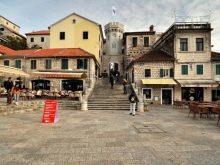


This interesting detail was the reason for the birth of a popular joke that the abundance of urban steps explains the unusual harmony of local girls.
Herceg Novi Botanical Garden is also man-made - most exotic plants are brought here by sailors from all over the world. The 7-kilometer city embankment leads to the village of Igalo, where Jaleep Tito’s summer residence “Galeb” is located. Now they conduct tours. Igalo is famous for S. Milosevic’s medical center with useful mineral springs and mud.
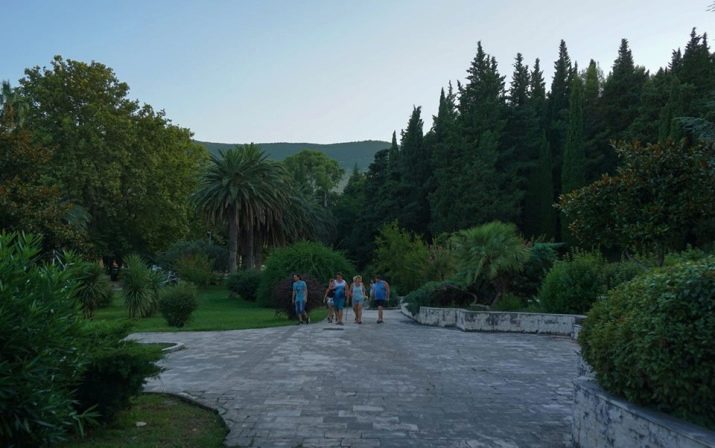
The city center immerses you in the mysterious Middle Ages. Here you will find the magnificent Turkish clock tower, several churches and 3 fortresses. In the Savino Monastery in 2005, director Emir Kusturica was baptized.
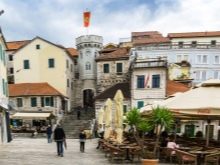

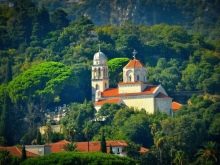
On the other side of the bay, opposite Kotor, is formerly the city of fishermen and captains - Prcanj. The Prcanic navigator Ivo Vizin, the sixth in the world, traveled around the world on the ship Splendido.
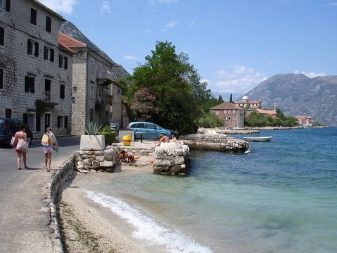
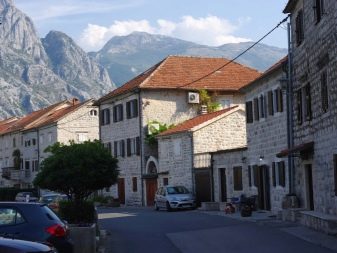
Now this tourist village is known for its majestic Catholic church of the Virgin, built over 120 years (the Venetians began, and ended at the time of the Austro-Hungarians). According to one version, the temple was ordered by the Knights of Malta. The temple opens on holidays.

In Tivat, there is an airport that accepts charter aircraft. Here the yacht port with boutiques and restaurants is full of colorful sails for every taste. “Porto Montenegro” resembles Nice or Monaco and looks no worse than the Cote d'Azur.
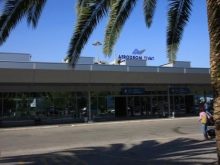
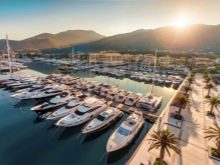

The Arsenal Museum of Naval Heritage located here is extremely informative.One of the two submarines in the port can be visited on an excursion. The museum displays exhibits from the time of Austria-Hungary and Yugoslavia.

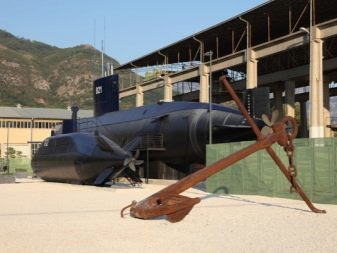
Mountain Stoliv is a unique abandoned village, hidden on the Vrmac peninsula in quaint mountains at an altitude of 240 meters. The path to the village lies through the village of Nizhny Stoliv along an ancient stone road through a chestnut forest. The village is notable for the fact that it was founded in the XIV century and is mentioned in historical chronicles of 1326.
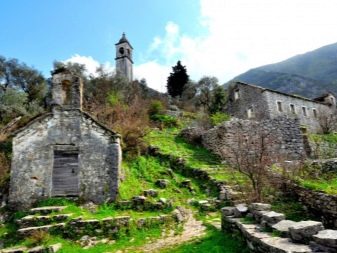
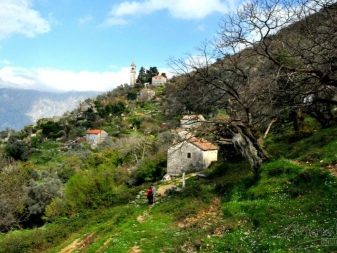
There are practically no inhabitants in the village; it is in a dilapidated state. It offers breathtaking views of the bay.
Interestingly, the name "Stoliv" is associated with an old beautiful tradition. The fact is that the guy who decided to marry had to plant 100 olive trees before the wedding. Only after that he was allowed to lead the bride to the altar. There are two temples in the village - St. Anne and St. Elijah.
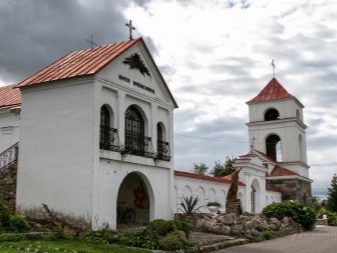

The excursions offered in Kotor fully cover all the tourist splendor of the riviera. You can go around all this on a bicycle and take beautiful photos.
The beaches of Kotor, as already noted, are not the main incentive for tourists to come to this region. There are no sandy beach lines within the city. A significant part of the coastline is occupied by the port.
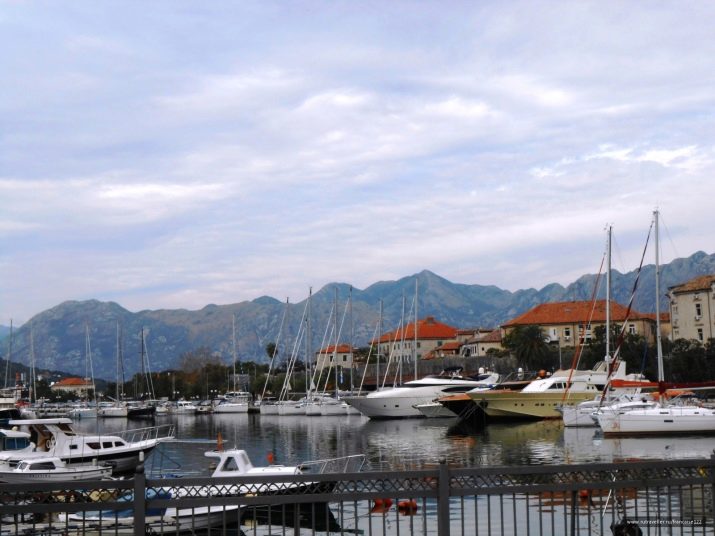
The nearest more or less spacious beach is located in Dobrota (4 km north of the capital), it is a series of pebble and concrete areas with fungi and sun loungers. In the bay, this is one of the most visited bathing spots located near the city.


A good beach area with pebbles and clear turquoise water is located on the outskirts of the village of Doni Orahovets. The coastal canopy of the site allows children to safely swim here.

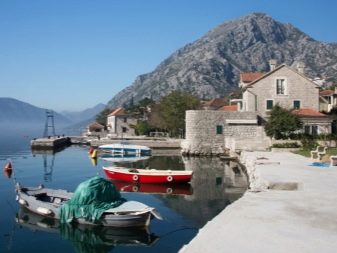
Following another 2 km, we reach the town of Bayova Kula with a well-equipped deck chair area and a pristine shingle beach.
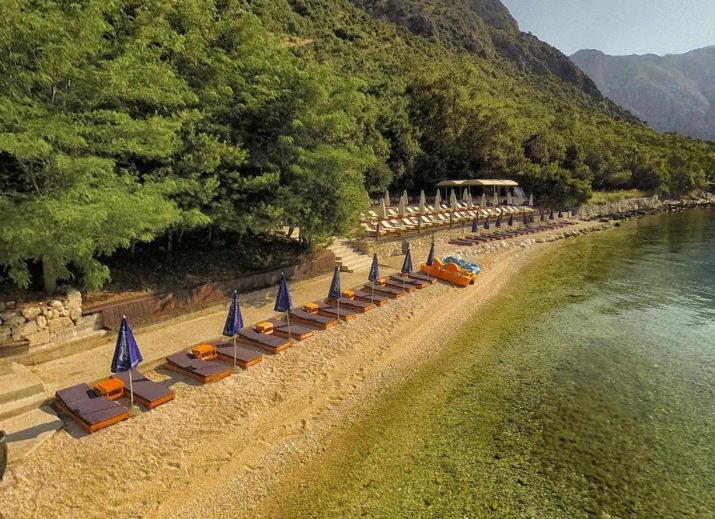
A popular beach spot in the Perast area is 320 meters long, including a number of installed stone platforms and equipped with sun loungers. Here you can dive with pleasure.

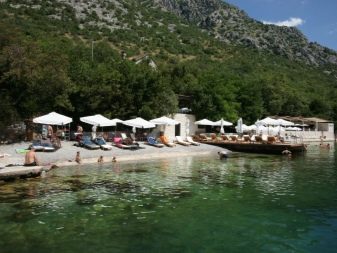
Completely covered with pebbles and a fairly long beach of Kotor - this is Risan, located near Perast. It is characterized by a variety of attractions.
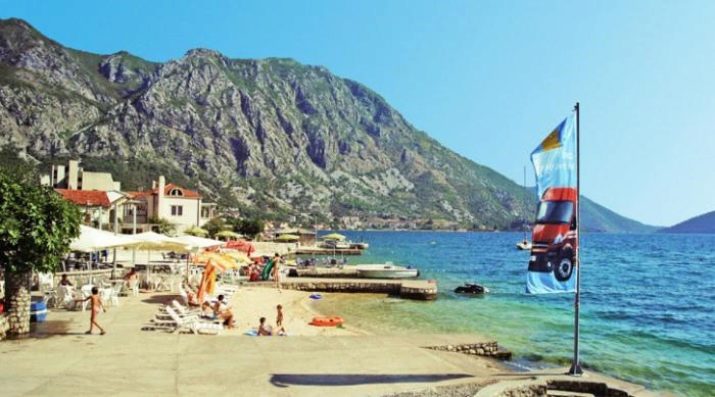
Morinj is perhaps the most remote place for a water holiday in the bay - perfectly equipped and allowing you to retire.

On the left bank near the capital, you can enjoy relaxing on the beach spots of Cape Marco and near the village of Doni Stoliv.

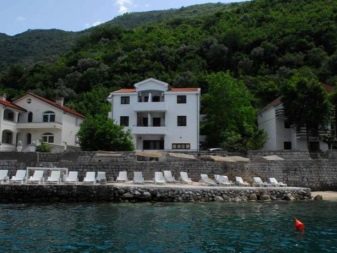
Small sand and gravel in Budva, Herceg Novi, Tivat, Petrovac are more suitable for kids. The coast of these cities is characterized by an unhurried, without breaks, descent into the water and the presence of various attractions.
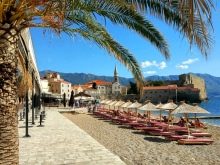
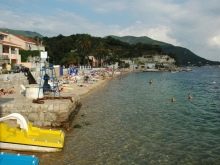
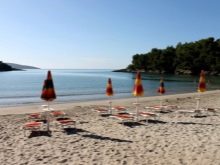
You should not choose places near port facilities, which are many in the riviera, where the water will obviously not be clean.
It is better to get to the wildest, secluded places suitable for swimming from the city by public transport and then just walk.
The waters of the bay are rich in fish, so the fishing in Kotor is glorious. Oyster farms are also known for their stocks. You can go fishing through the travel agencies existing here, but you can also arrange for a small fee with local fishermen. Locals have a good command of the Russian language and it is not difficult to organize fishing for them.
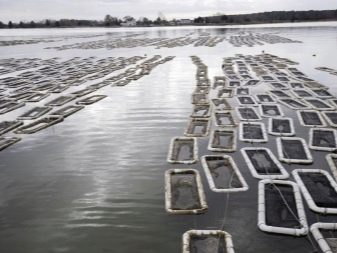
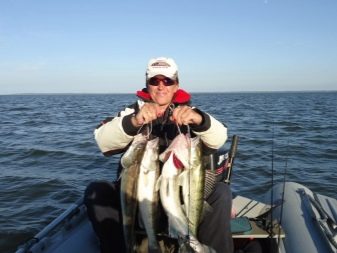
Gourmets enjoy exquisite dining at one of the oyster farms (they are allocated yellow-orange buoys). At the bay, in a special setting and with chic, you can cheaply taste the freshest oysters and other marine life.
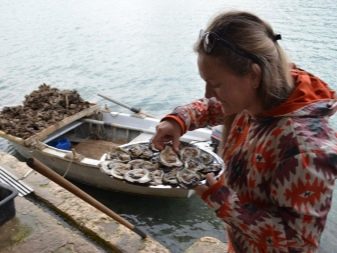
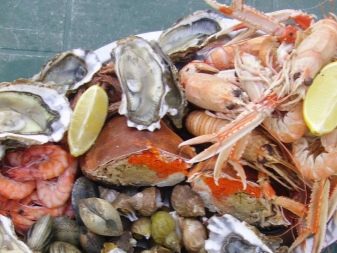
How to get there
Even the map beautifully shows us the Bay of Kotor in the west of Montenegro in the shape of a large butterfly. The place can be reached without much tiring, by public transport. It is easy to get to the city from Podgorica (the capital of Montenegro) or from Tivat Airport. Car rental is convenient, but taking into account the steep and difficult mountain topography of the road, this option is not acceptable for everyone.
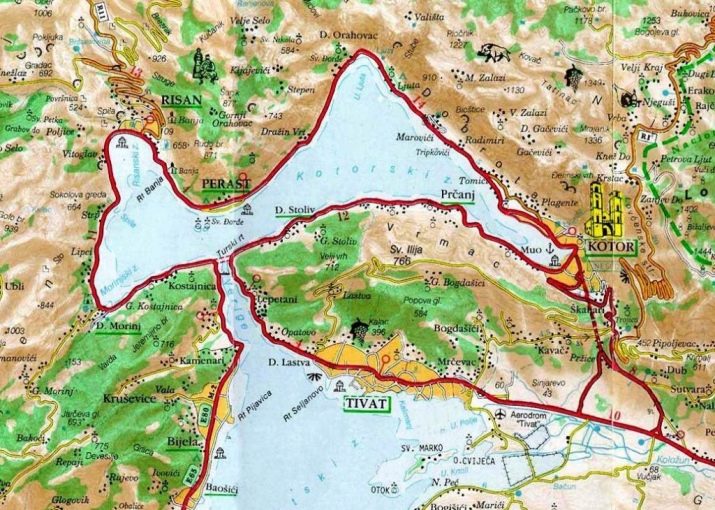
An interesting option is individual tours.
For many tourists, the best way is to get to the bay as part of the Boko-Kotor Bay marine group excursions. In addition, it is not only an opportunity to consider the beauty of the bay from the ship, but also to get familiarization with the goals and possibilities of your trip.

Where to stay?
Tourism is one of the leading regional revenue streams in Kotor. It has a developed tourism infrastructure, which is thoughtfully, carefully and constantly improved by local authorities. Therefore, the question of living sounds rhetorically in this case. It all depends on the taste, needs and financial capabilities of tourists.
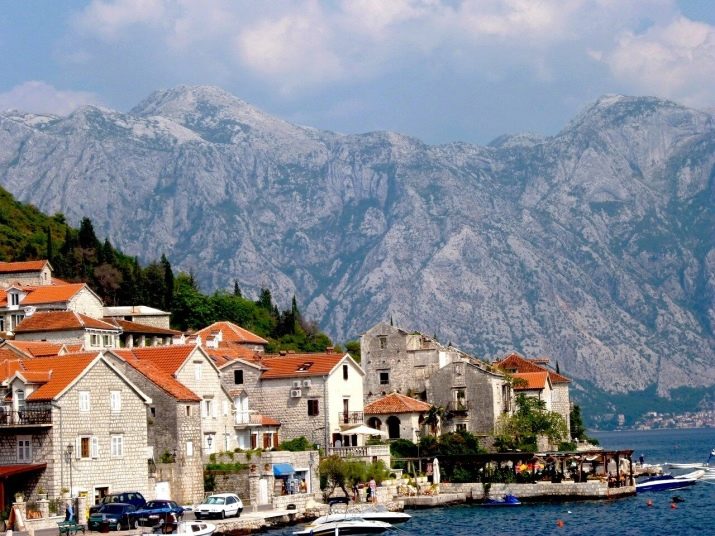
The choice of places to stay in the Bay of Kotor is represented by a wide range of hotels, traditionally distinguished by the number of stars, but always providing a high level of service. For lovers of a leisurely, elite holiday in 5-star hotels, 10 hotels offer their services.

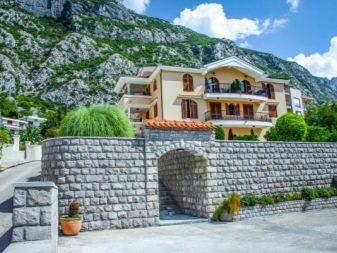
Lower-ranking hotels with a wide geography in the region are presented in the list:
- 4 * - 40 hotels;
- 3 * - 45 hotels;
- 2 * - 10 hotels;
- apts category (apartment hotel) - 24 hotels;
- category hv2 (holiday village, “club hotel” corresponds to 2 category hotels) - 1 hotel.

The figures given are approximate, but the overall picture of the possibilities for accommodating tourists is consistent.
About Boko-Kotor Bay, its features and attractions, see the next video.
